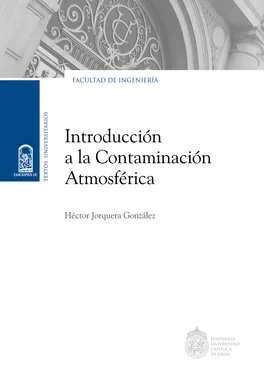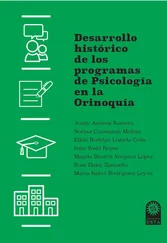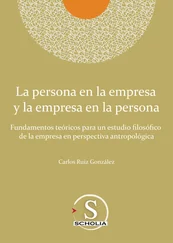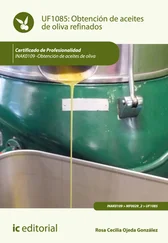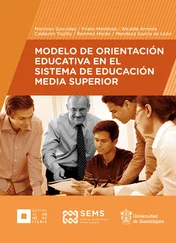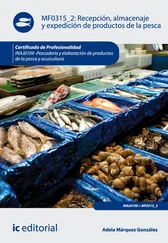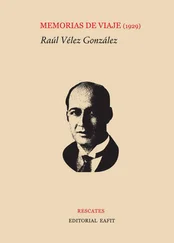2.6 Referencias
2.6.1 Vínculos a páginas web
a)Proyecto europeo APHEIS: www.apheis.net
b)Base de datos del estudio norteamericano NMMAPS: http://www.ihapss.jhsph.edu/data/data.htm
c)Página web de la OMS: http://www.who.int/es/index.html
d)Bases de datos de la Cepal: http://www.cepal.org/estadisticas/bases/
e)Bases de datos del PNUMA: http://geodata.grid.unep.ch/
f)Environmental Health Perspectives: http://www.ehponline.org/
g)Health Effects Institute: http://www.healtheffects.org/
h)Portal sobre el asma en niños y adolescentes: http://www.respirar.org/
i)Estudio Internacional de Asma y Alergia en la Infancia (ISAAC): http://www.respirar.org/isaac/
2.6.2 Referencias
1)Ayres, J. G. y H.C. Routledge. Cardiovascular effects of Particles . Cap. 2 del libro: Air Pollution and Health . J. Ayres, R. Maynard y R. Richards, eds. Londres: Imperial College Press, 2006.
2)Baccinia, M., A. Biggeria, C. Lagazio, A. Lertxundia y M. Saez. “Parametric and semi-parametric approaches in the analysis of short-term effects of air pollution on health”. Computational Statistics & Data Analysis 51 (2007), 4324-4336.
3)Bell, M. L. y D. L. Davis. “Reassessment of the lethal London fog of 1952: novel indicators of acute and chronic consequences of acute exposure to air pollution”. Environ Health Perspect 109 (2001), Suppl 3: 389-394.
4)Bell, M.L., A. McDermott, S.L. Zeger, J.M. Samet y F. Dominici. “Ozone and Short-term Mortality in 95 US Urban Communities, 1987-2000”. JAMA 292, No 19 (2004), 2372-2378.
5)Bell, M.L., F. DominiciJ.M. Samet. “Meta-Analysis of Time-Series Studies of Ozone and Mortality with Comparison to the National Morbidity, Mortality, and Air Pollution Study”. Epidemiology 16, 4 (2005): 436-445.
6)Cakmak, S., R.E. Dales y C. Blanco Vidal. “Air Pollution and Mortality in Chile: Susceptibility among the Elderly”. Environmental Health Perspectives 115, 4 (April 2007), 524-527.
7)Cifuentes, L.A. J. Vega y K. Kopfer. “Effect of the Fine Fraction of Particulate Matter versus the Coarse Mass and Other Pollutants on Daily Mortality in Santiago, Chile”. Journal of The Air & Waste Management Association 50 (2000), 1287-1298.
8)Cifuentes LA, V.H. Borja-Aburto, N. Gouveia, G. Thurston y D. L. Davis. “Assessing the health benefi ts of urban air pollution reductions associated with climate change mitigation (2000-2020): Santiago, Sao Paulo, Mexico City, and New York City”. Environ Health Perspect 109, Suppl 3 (2001): 419-425.
9)Cohen A.J., H.R. Anderson, B. Ostro y otros. “Mortality impacts of urban air pollution”. En Ezzati M., A.D. Lopez, A. Rodgers, C.J.L. Murray, eds. Comparative Quantification of Health Risks: Global and Regional Burden of Disease Attributable to Selected Major Risk Factors . Non serial publication. WHO: Geneva, Switzerland: WHO, 2004.
10)Dockery, D., C. Pope III, J. Spengler, J. Ware, M. Fay, M. Ferris y F. Speizer. “An association between air pollution and mortality in six U.S. cities”, The New England Journal of Medicine 329, N° 24 (1993),1753-1759.
11)Dominici, F. y otros. “On the use of the generalizad additive model in time-series studies o fair pollution and health”. American Journal of Epidemiology 156 (2002): 193-203.
12) Economic Valuation of Improvement of Air Quality in the Metropolitan Area of Mexico City , Institute for Environmental Studies (IVM, Holanda), Centro Nacional de Salud Ambiental (CENSA, México), Comisión Ambiental Metropolitana (CAM, Ciudad de México), Pan American Health Organization (PAHO), Environmental Health Sciences Department (EHS-UCLA), junio 2000.
13)Garshick, E., F. Laden, J.E., Hart, B. Rosner, T.J. Smith, D.W. Dockery y F.E. Speizer. “Lung Cancer in Railroad Workers Exposed to Diesel Exhaust”. Environmental Health Perspectives , 112, N° 15 (November 2004), 1539-1543.
14)Giles L. y otros. “From Good Intentions to Proven Interventions: Effectiveness of Actions to Reduce the Health Impacts of Air Pollution, Environ”. Health Perspect 119 (2011), 29-36.
15)Ilabaca M., I. Olaeta, E. Campos, J. Villaire, M.M. Tellez-Rojo e I. Romieu. “Association between levels of fine particulate and emergency visits for pneumonia and other respiratory illnesses among children in Santiago, Chile”. J Air & Waste Manag Assoc 49, N° 9 (1999), 154-163.
16)Lave, L.B. y E.P. Seskin, E.P. Air pollution and human health . Baltimore: John Hopkins University Press, 1977.
17)Loomis D., M. Castillejos, D.R. Gold, W. McDonnell y V.H. Borja- “Air pollution and infant mortality in Mexico City”. Epidemiology 10, N° 2 (1999) 118-123.
18)McConnell, R., K. Berhane, F. Gilliland, F.,S.J. London, T. Islam, W.J. Gauderman, E. Avol, E.,H.G. Margolis y J.M. Peters. “Asthma in exercising children exposed to ozone: a cohort study”. Lancet 359 (2002), 386-391.
19)Ostro, B., M. Lipsett, M. Wiener y J. Selner. “Asthmatic Responses to Airborne Acid Aerosols”. American Journal of Public Health 81, N° 6 (June 1991), 694-702.
20)Ostro, B., J. Sánchez, C. Aranda y G. Eskeland. “Air Pollution and Mortality: Results from a Study of Santiago, Chile”. Journal of Exposure Analysis and Environmental Epidemiology 6, N° 1 (1996), 97-114.
21)Ostro B., G.S. Eskeland, J.M. Sanchez y T. Feyzioglu. “Air pollution and health effects: A study of medical visits among children in Santiago, Chile”. Environ Health Perspect . 107, N° 1 (1999), 69-73.
22)Ostro, B. Outdoor Air Pollution, Assessing the environmental burden of disease at national and local levels . WHO, 2004. Disponible en: www.who.int/entity/quantifying_ehimpacts/publications/ebd5.pdf.
23)Oyarzún M., P. Pino, J. Ortiz e I. Olaeta“Effect of atmospheric pollution on the respiratory system”. Biol Res 31, N° 4 (1998), 361-366.
24)PAHO, Organización Panamericana de la Salud. Situación de la salud en las Américas: Indicadores básicos 2004 . Washington, D.C.
25)PAHO. Evaluación de los efectos de la contaminación del aire en la salud de América Latina y el Caribe . Área de Desarrollo Sostenible y Salud Ambiental, Organización Panamericana de la Salud, ISBN 92 75 12598 8, 49 páginas, 2005.
26)Pope, C.A. y D.W. Dockery. “Health Effects of Fine Particulate Air Pollution: Lines that Connect”. J Air & Waste Manage Assoc 56 (2006), 709-742.
27)Pope III, A. y L. Kalkstein. “Synoptic Weather Modelling and Estimates of the Exposure-Response Relationship between Daily Mortality and Particulate Air Pollution”. Environmental Health Perspectives 104, N° 4 (April 1996), 414-420.
28)Pope III, C.A., D.L. Rodermund y M.M. Gee. “Mortality Effects of a Copper Smelter Strike and Reduced Ambient Sulfate Particulate Matter Air Pollution”. Environmental Health Perspectives 115, N° 5 (May 2007), 679-683.
29)Salinas, M. y J. Vega. “The effect of outdoor air pollution on mortality risk: an ecological study from Santiago, Chile”. World Health Stat Q 48, N° 2 (1995), 118-125.
30)Sánchez J., I. Romieu, S. Ruiz, P. Pino y M. Gutiérrez. “Acute effects of the breathing of industrial waste and of sulfur dioxide on the respiratory health of children living in the industrial area of Puchuncaví, Chile”. Rev Panam Salud Públic a 6, N° 6 (1999), 384-391.
31)Sanhueza P., C. Vargas y P. Jiménez. “Mortalidad diaria en Santiago y su relación con la contaminación del aire”. Rev Méd Chil 127, N° 2 (1998), 235-242.
32)Touloumi y otros. “Analysis of health outcome time series data in epidemiological studies”. Environmetrics 15 (2004), 101-117.
Читать дальше
